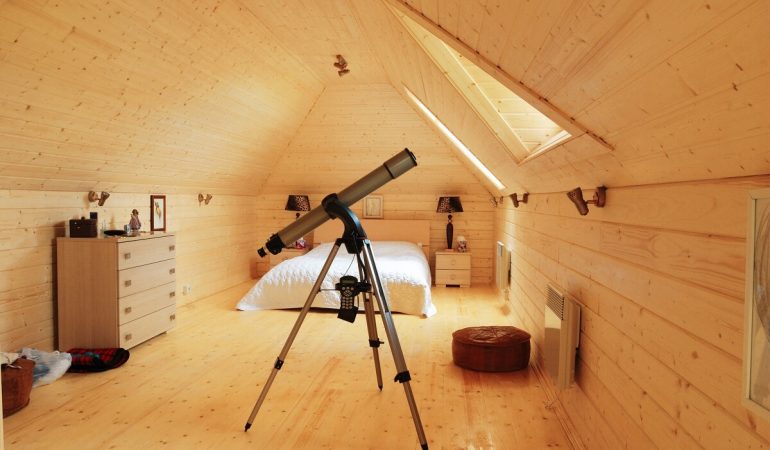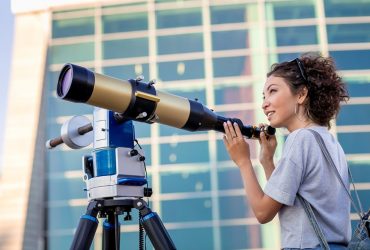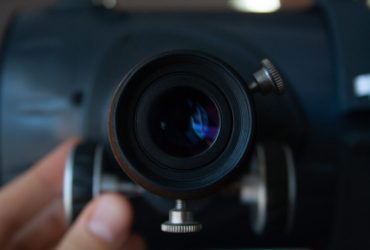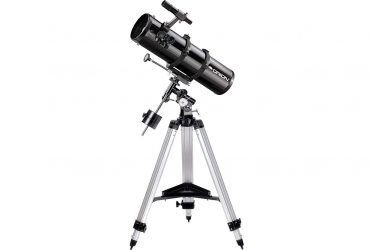How Much Does A Good Telescope Cost?
How much does a good telescope cost? It depends on your definition of ‘good’. For a beginner, a 70mm Dobsonian is perfect for their observation needs. For a more advanced amateur astronomer, a pricey 200mm telescope with a motorised EQ mount is what they’d consider good.
The price of a telescope depends greatly on two things: the optics and the mount. Let’s discuss how each of these affects the price.
Optics
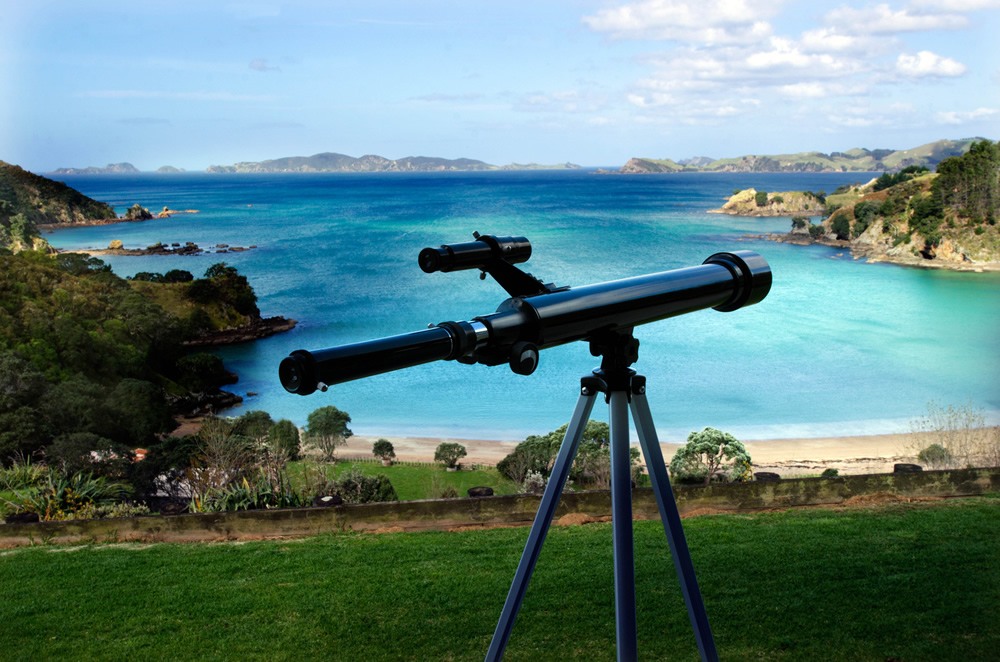
A telescope’s optics determine how clearly you can observe the sky and how deep you can see.
1. Aperture Size
The most important optical aspect is aperture size. This is the diameter of the light-collecting lens at the front of the telescope.
A larger aperture collects more light, thus allowing you to see objects in clearer detail and look at celestial objects deeper in the sky.
Beginner telescopes have an aperture of 70mm or 2.8”. This is the minimum recommended aperture size if you want to get decent views of the sky. With the right eyepiece, you should be able to observe the moon and planets and even some galaxies and nebulae.
You can find plenty of 70mm telescopes for under £100. They are great for kids, beginners and anyone looking for an affordable telescope with decent optical quality.
As aperture size increases, price also goes up. For instance, a 200mm aperture telescope will easily cost over £200.
2. Focal Length
Another optical quality that affects price is focal length. The focal length of a telescope determines the amount of magnification you’ll get once to attach an eyepiece.
A longer focal length generally provides higher magnification. High-end powerful telescopes can have extra-long focal lengths up to 1,800mm. This provides high-powered views of moons, planets and stars. But expect to pay several hundred or thousand pounds for such a telescope.
In contrast, beginner telescopes that cost under £100 have a 300-400mm focal length. These telescopes provide blurrier views of planets and moons but are great for observing wide swathes of star clusters and galaxies since they have a wider field of view.
3. Type of Telescope
Telescopes are categorised based on their optical technology. The three major categories are reflector, refractor and compound.
The type of telescope affects the price.
Basic beginner 70mm telescopes have the same price range whether you are buying a reflector or refractor telescope. You can get either type for under £100 or slightly more.
But as aperture size increases, reflector telescopes become the more economical choice. That’s because large mirrors are cheaper to manufacture than large refracting lenses.
For example, the Celestron 22403 Refractor telescope with 100mm aperture size and 660mm focal length is more expensive than the Celestron 21049 Powerseeker Reflector telescope with a 127mm aperture and 1,000mm focal length.
Compound telescopes are generally more expensive than beginner and intermediate refractor/reflector telescopes. That’s because they have more complicated optics and many have computerised mechanisms.
Mount
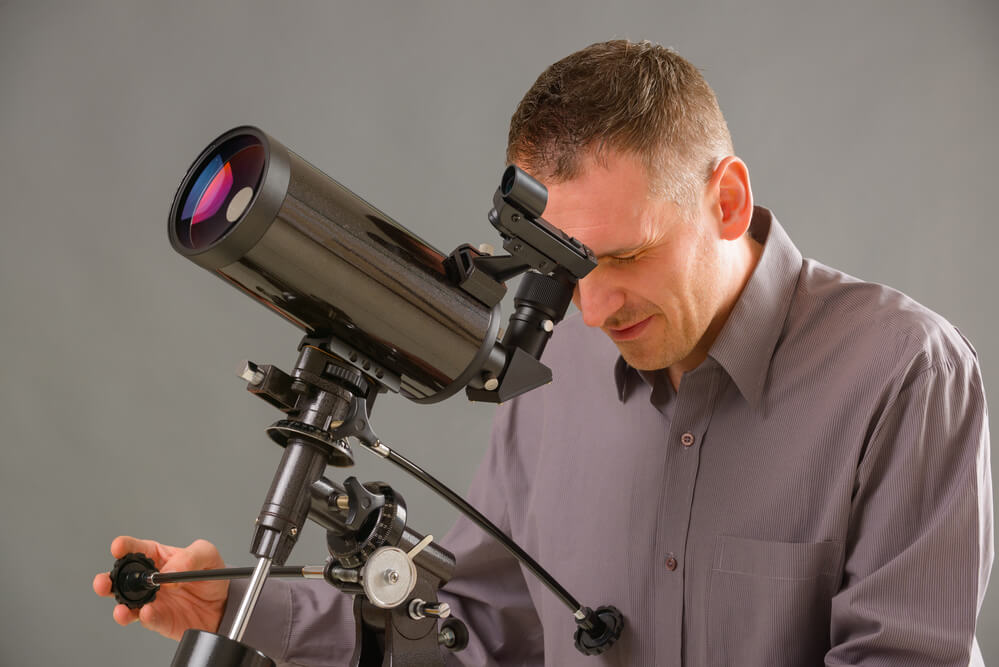
The other major factor that determines the price of a telescope is the type of mount used.
Many budget telescopes have simple altazimuth (Alt-Az) mounts. An Alt-Az mount allows you to move the telescope up and down or right and left.
An equatorial mount allows easier and more accurate tracking of objects as they move across the sky. A telescope with an equatorial mount will cost you more. Such telescopes typically start at £100. The price goes higher if the mount is motorised.
The addition of computerised tracking will also increase the price tag, although not all astronomy enthusiasts agree that it’s better than manual.
When you are starting out, an Alt-Az mount is adequate. When you upgrade to a more powerful telescope later, consider spending more on one with an equatorial mount.
Other Factors
Here’s what else will determine the price of a telescope.
- This includes the number and focal length of eyepieces included with the telescope. Accessories like a finder scope and a smartphone/camera holder can also make the telescope pricier.
- Making a powerful telescope small and lightweight requires complex and expensive design and manufacturing. So a highly portable telescope that is also powerful will be expensive.
- Computerised tracking. Telescopes with computerised tracking (GoTo) make tracking objects easy especially for beginners who are not familiar with the night sky. But they are expensive with prices starting at £300 and going as high as £800. Check this Meade ETX 125 or this Celestron AstroFi.
Bottom Line
The good news is, telescopes have gotten much cheaper over time. So you can get a good telescope for as little as £60. £100-£200 gets you a high-magnification telescope that will likely be enough for all your observation needs if you’re just starting.
Telescopes over £300-500 are mostly for experienced hobbyists.
Do not feel the pressure to spend a lot of money on a telescope. Even an affordable telescope can give you great views when you pair it with the right eyepiece.
In fact, for beginners, we recommend focusing your budget on high quality accessories like eyepieces and light filters.
